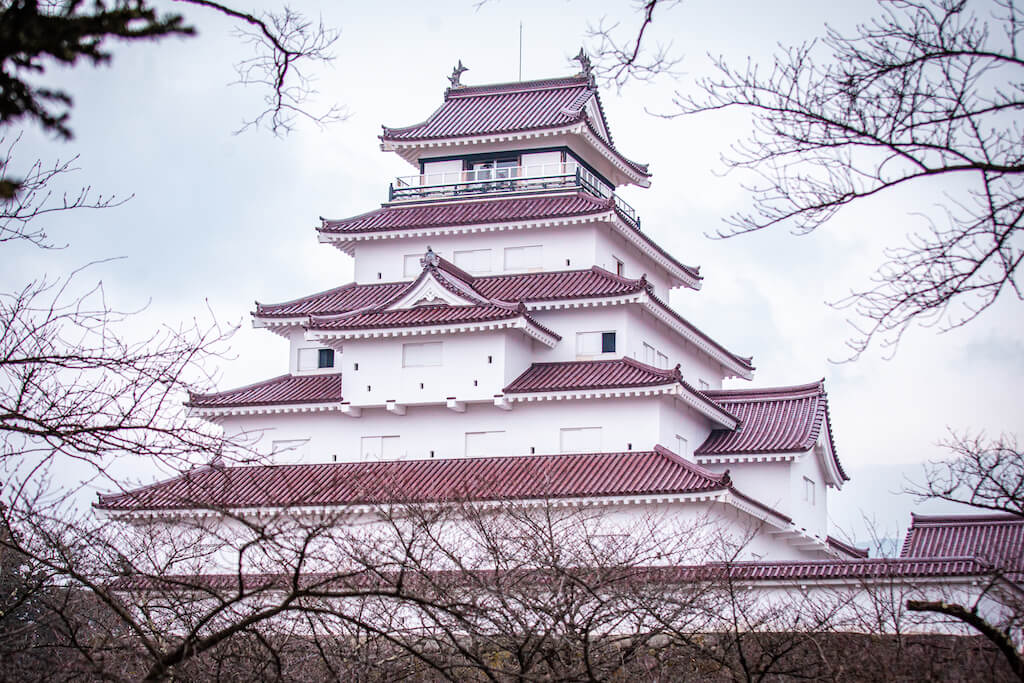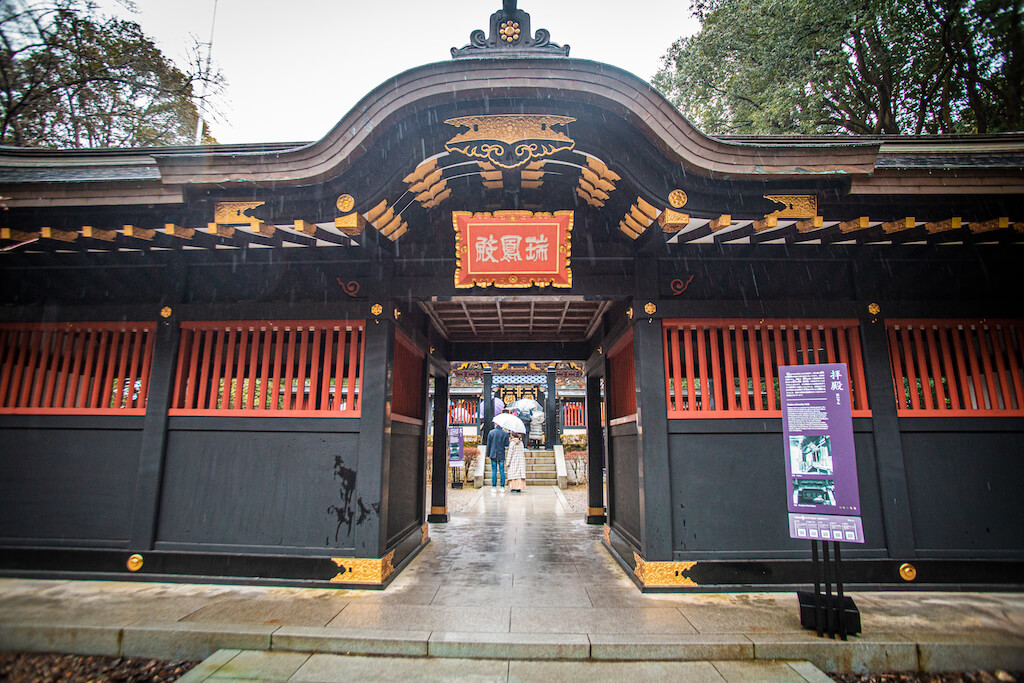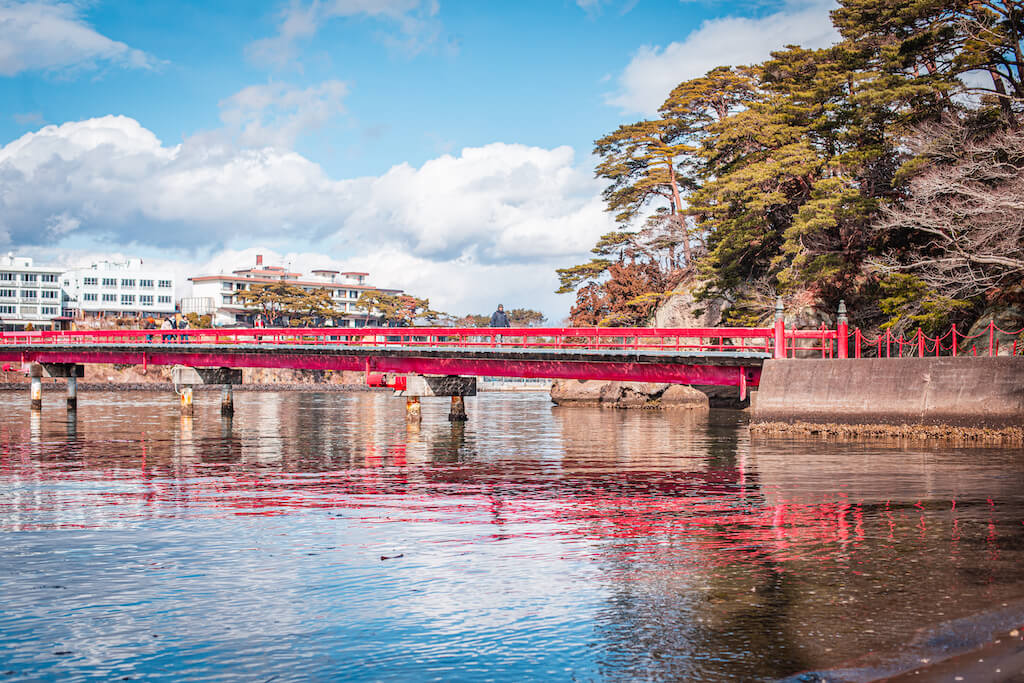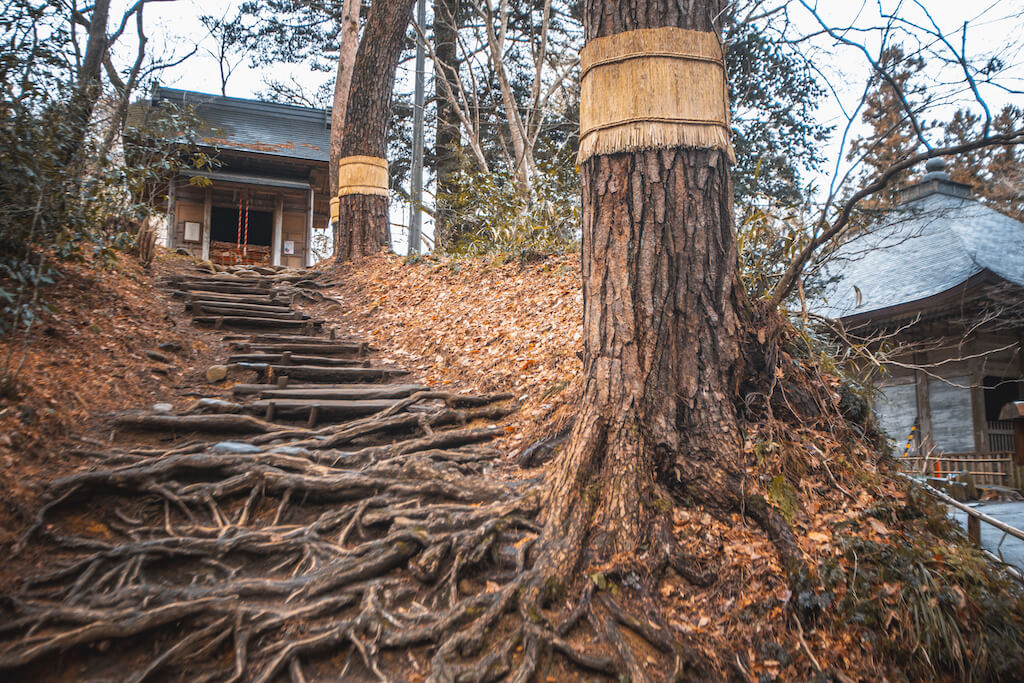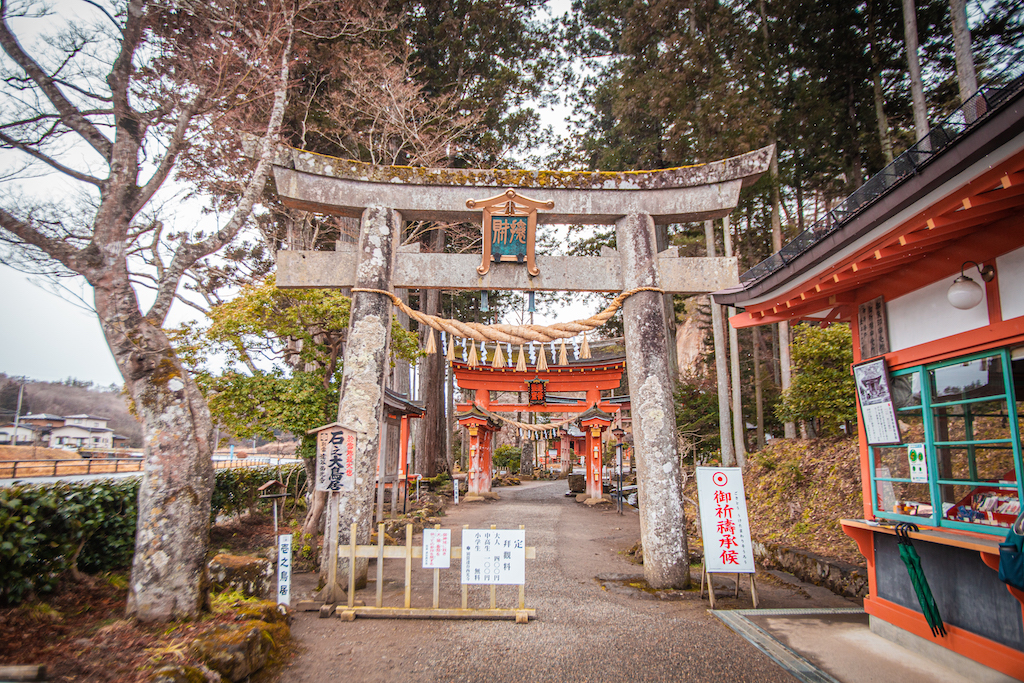In 2020, Japan Wonder Travel was given a project by the Ministry of Economy, Trade and Industry (METI) to promote 14 selected prefectures that have been affected by typhoons. We offered 20 internationals living in Japan, the opportunity to travel to several destinations and share their experiences while travelling and also after.
Lucía – Tohoku
My name is Lucía and I’m Spanish, photographer and story teller.
I arrived to Japan in 2017 and I work as a freelance travel writer. My purpose is to share the deeper, quieter and unknown side of Japan. Hidden gems. Daily life.
When I was invited to participate in this project by the Ministry of Economy, Trade and Industry (METI), I jumped with excitement at the chance of visiting Tohoku for the first time and discovering its countless wonders off the beaten path.
Tohoku is located in the north of Honshu – the main island of Japan – and it consists of six prefectures: Akita, Aomori, Fukushima, Iwate, Miyagi and Yamagata. During my adventure I had the opportunity of traveling around three of them and I am glad to share my experience with you:
Day 1: Fukushima Prefecture – Aizu-Wakamatsu: The Samurai Village.
My first stop was in western Fukushima prefecture: Aizu-Wakamatsu, a castle town well-known as the land of the Aizu samurai and where the last of the samurai fought during the final revolution.
Nisshinkan, the school of Aizu samurai clan
My adventure in Aizu-Wakamatsu started in the Nisshinkan, a samurai school founded in 1803 that produced some of the best samurai in Japan.
Today is open to the public for lessons in archery and other samurai skills, zen practice or painting local crafts.
I decided to try the crafts and I could experience the painting of Aizu’s regional toy, a lucky red cow known as “Akabeko”. As I worked my way with the brushes, a group of high schoolers touring the area appeared, making me feel like a time traveler surrounded by young samurai apprentices.
Nanokamachi-dori, souvenirs and cafes along a traditional street
After that, I headed for Nanokamachi-dori, and old fashioned street with several shops and cafes where I enjoyed a nostalgic atmosphere that made me dream about how was the life there during the samurai period.

Miso Dengaku, the samurai food
It was already lunch time, I was starving and I hadn’t decided where to have lunch yet so I just walked around the streets in Nanokamachi area until I found a place that caught my attention so I decided to go inside. Mitsuta-ya is famous for its Miso Dengaku, the typical samurai food that consists in skewered konjac and sticky rice balls, vegetables and fish flavored with miso sauce and grilled on a charcoal fire in front of me, which was really cool and delicious at the same time. Inside the restaurant there is a shop with a variety of souvenirs and I bought the most popular miso for using it at home.
Tsurugajo, a particular castle
Once I had eaten I headed for Aizu’s castle. Known as ‘Tsurugajo’ is one of the top things to do in Aizu-Wakamatsu and an absolute must-see.
I have visited many castle’s in Japan: the emblematic Nagoya castle, the deep black Matsumoto Castle, the pure white Himeji castle and so on.
But there is something unique about Tsurugajo that makes it different from the other ones and that surprised me: vibrant red tiles adorn the roof, an uncommon color for Japanese castles.
Iimoriyama and the Byakkotai tragedy
The day was almost finished and it was getting darker but I had time for one more sightseeing spot, the scenery of a tragic story: Mount Iimoriyama
During the war in 1868, twenty boys from the Byakkotai unit (White Tiger Corps), sons of high-ranking samurais noticed smoke and flames coming from Tsuruga castle and they thought that Aizu had fallen and the battle was lost. Following the samurai tradition, the boys committed seppuku, ritual suicide, rather than be captured or defeated. But the castle wasn’t taken and the flames they see were outside of it.
Only one of the twenty young Byakkotai survived the suicide attempt and thanks to him the story of the sacrifice of the boys became known to the public.
Further up Mount Iimoriyama, accessible by (long) stairs or a paid escalator, lies a memorial with the tombs of the nineteen boys, in the place where the young samurais committed suicide.
So I was there, at the top of Iimoriyama, near the nineteen graves, overlooking the town and a strong feeling hit me hard. They were teenagers but their act represents the ultimate testimony of pride and integrity. The ultimate act of loyalty for the city they loved.

Down the northern side of the hills there is the unique Sazaedo Pagoda that is particularly interesting because people can enter inside, and a ramp spirals up to the top and down again. I found myself going up and down many times checking the walls and ceiling covered with stickers from people that accomplished their pilgrimage there.
Days 2 and 3: Miyagi prefecture – Akiu, Sendai and Matsushima: crafts and coast
The next stage of my trip was Akiu Onsen, located near Sendai (the main city of Miyagi prefecture) and where we can find some of Miyagi’s best hot springs and a beautiful scenery for hiking.
Akiu Onsen, hot springs and kokeshi
Unfortunately, that day was raining heavily and I made a mistake. When I checked how to get there on Google maps, the app recommended me to get a local train and after that ride a bus and I did so. But later, in my hotel in Akiu, the staff told me that there was a direct bus from Sendai Station to Akiu Onsen, the cost was the same but it takes me more time to arrive there.

It was late when I arrived there, and my first stop was in the Tourist Center because I was interested in having another painting experience in the town, so they helped me to make a reservation for the workshop and also indicated my how to move around Akiu by bus.
Also, since it was still raining and I didn’t bring an umbrella, they told me that they could contact with my hotel for asking a car to pick me up so I arrived to the hotel safe and sound and dry!
After dropping off my suitcase in my room I headed to the painting experience in Akiu Kogai no Sato (Traditional Craft Village), home to a few different stores and workshops.
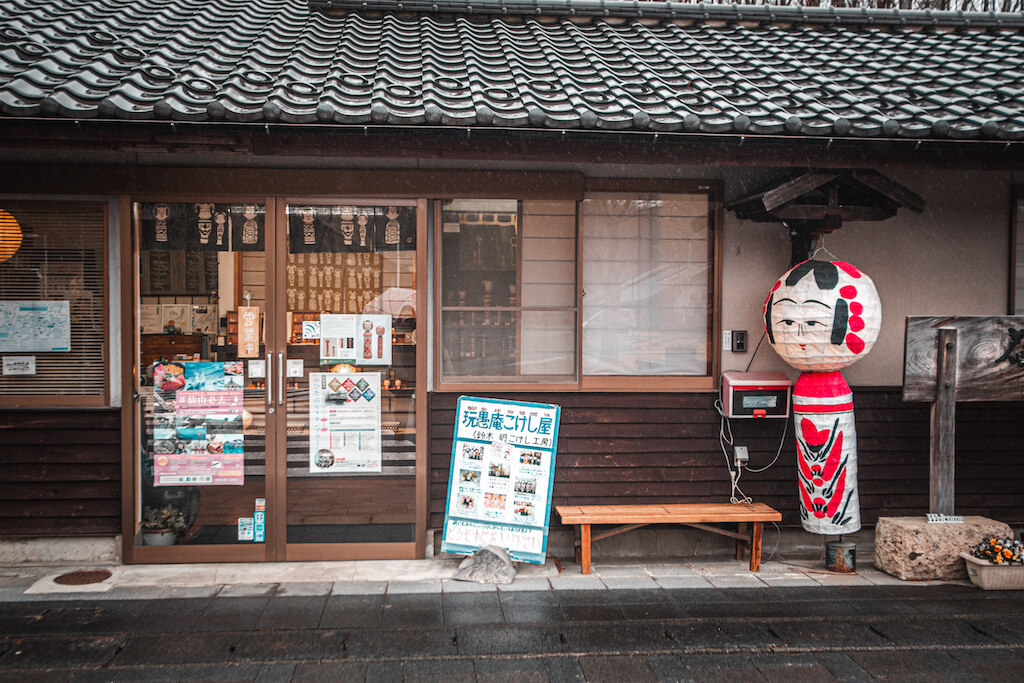
This time I painted a Kokeshi, traditional wooden dolls that have been made since ancient times in Japan, originally from the Tohoku area.

I walked into the shop called “Gangu-an”, where professional Kokeshi craft mans have kept their skills for generations and they explained me about the workshop step-by-step.
Actually, painting a Kokeshi is really difficult especially when it came to painting the eyes because they are painted with thick inks directly onto the dolls and the calligraphy brushes are difficult tools to control. So if there is a mistake, it cannot be erased! But I enjoyed the experience and since I was alone in the shop I could talk with the owner for long time until my bus arrived. She explained me that her husband and her son are the Kokeshi artisans and they won some awards!

After finishing my Kokeshi, I took the bus and I was walking around Akiu Onsen but it was getting darker and pouring rain and everything around there was closed so I decided to go back to my hotel and enjoy the hot springs there.
Zuihoden, the Mausoleum of a great man in Sendai
Next day I headed to Sendai city, again under the rain, and I visited one of the most popular spots there: Zuihoden the mausoleum of Date Masamune, one of the most powerful feudal lords during the Edo Period and his descendants. It is made with the traditional architecture style of 400 years ago. It features intricate woodwork and a rich variety of vivid colors, movement and shapes.
Near the Mausoleum there is also a small museum that it’s crucial to understand how extraordinary these men were.
Matsushima, one of the most beautiful views in Japan
When I finished my visit around the Mausoleum I went back to Sendai station and got a local train to my next stop in Miyagi prefecture and I was really excited about it.
Some years ago when I visited Miyajima Island in Hiroshima prefecture, I discovered that Miyajima is one of the ‘top three scenic spots in Japan’, the second one is Amanohashidate in Kyoto prefecture and the third one is Matsushima in… yes, in Miyagi. Finally I had the opportunity to discover other of the most beautiful spots in Japan and I couldn’t leave Miyagi without visit it.
It took around 40 minutes to arrived there, and after leaving the station I walked to the pier and bought a ticket for a cruise around the coast which is a must for Matsushima sightseeing.
Discovering Matsushima’s treasures
Since the boat was really crowded, I decided to pay extra to access the upper deck because it was almost empty and also there was an access to the boat terrace where I could enjoy the views of the almost 250 small islands in the bay.
When the cruise was finished I headed to Godaido temple, a small temple hall on an islet just next to the pier and one of must-see Matsushima’s symbols. I was really surprised because despite its location, the temple did not suffer major damage in the tsunami of 2011.
A seafoods heaven
It was already noon and I was starving so I went to the Tourist Center near the pier for asking some advice about where to have lunch. There, they told me that Matsushima oysters are popular and the best season is from October to March. There are a lot of all-you-can-eat oysters restaurants around the town and also a seafood market with some dining options inside there. I found this last option really interesting and I decided to give it a try.
Matsushima seafood market is a seafood lovers absolute heaven and a convenient place for lunch or to buy seafood.
The rain had stopped and there was a seafood restaurant in the market’s entrance with some plastic tables and chairs and a reasonable menu, I chose grilled squid and oysters and it was delicious. It was a great day.
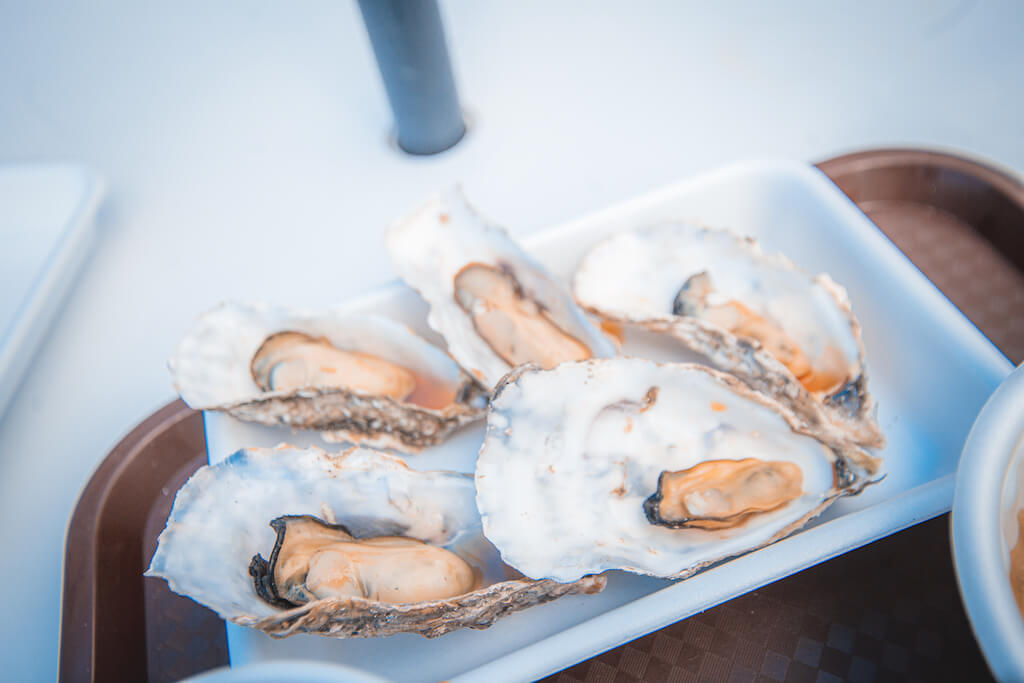
Lost in Fukuurajima paradise
With my stomach full, I decided to head to Fukuurajima, one of the highlights of Matsushima.
Fukuurajima is a natural island connected to Matsushima coast by 252-meter-long red bridge. In the island there are some walking trails with hundreds of species of plants and a small temple in the center.
Although the island is small and can be completed in around 30 minutes, I got lost while exploring it and after finding my way back I sat down at a small beach near the bridge and I relaxed while watching the horizon and thinking about all these people, locals and volunteers from all over Japan, that worked hard for recovering the area after the earthquake and tsunami in 2011.
Day 4: Iwate Prefecture – Hiraizumi: temples, shrines and world heritage
My trip was coming to its end and I spent my last day in Tohoku around Hiraizumi town, located in Iwate prefecture.
My time there was limited, I had some plans for the afternoon and I should come back that day to Tokyo.
So when I reached Hiraizumi I went directly to the Tourist Center. I told them that I only had few hours for visiting the town and they showed me in a map the places that they recommend me to see and where I should wait for the bus to get there.
Hiraizumi a charming and ancient town that once rivaled Kyoto for its beauty and elegant surroundings.
Temples and snow in Hiraizumi
The first place I went was Chusonji, Hiraizumi’s most famous attraction, an ancient, serene mountaintop temple that is a UNESCO World Heritage.
My experience there was magical because when I arrived to the entrance it started to snow. I was in the middle of a natural place, with soft and light snowflakes falling in silence from the sky. I could not ask for more.
Chusonji consists on a temple complex with some interesting spots like the spectacular Konjikido, a hall completely covered in gold. There is also a Treasure Hall that houses some impressive artifacts.
Takkoku no Iwaya, hidden in a cliff
I spent a couple of hours exploring Chusonji and while I was there I met a nice couple of Japanese elders from Morioka (the capital of Iwate prefecture) that were visiting Hiraizumi too.
We talked about the most recommended and beautiful places in the area and they told me that their next spot was going to be Takkoku no Iwaya, a temple near Hiraizumi that I wanted to visit but it was impossible to reach by public transportation during winter season.
Unexpectedly, the couple offered me to go with them by their car! It was my lucky day!
When we arrived to Takkoku no Iwaya, I was speechless. It was one of the coolest temples that I have ever seen in Japan (and believe me, I’ve seen a lot).
This temple is built in the rock wall of a cliff about 1.200 years ago and it is dedicated to Bishamon, god of victory. There is also a beautiful pond surrounding one of the temple’s building and three beautiful Torii gates that welcome visitors.
I highly recommend to visit Takkoku no Iwaya during a stay in Hiraizumi.
Tasting the mochi culture in Ichinoseki
After my visit to Takkoku no Iwaya, it was time to leave Hiraizumi and go back to Ichinoseki, the city where I stayed the night before because the train that will take me to the final spot of my Tohoku’s adventure departs from Ichinoseki.
Before taking that train I went to Sekinoichi Brewery for having a late lunch and experience the deep mochi culture of Iwate. Mochi is a Japanese rice cake made of glutinous rice and in Iwate Prefecture, a unique mochi culture has developed from generations for some 400 years.
The building was very nice and the atmosphere inside was charming. I ordered the mochi lunch based on ten different preparations of mochi and each was delicious. The set also included a miso soup and pickled vegetables. Even if the mochi are small, when I finished the meal I was really full!
Geibikei Gorge, lucky stones and traditional songs
After lunch I took the train to Geibikei station, the final stage of my trip and my purpose there was visiting the gorgeous scenery of Geibikei Gorge.
Geibikei means “lion’s nose” and the gorge got its name by the peculiar rock formation that looks like a lion nose!
There, I enjoyed a winter boat ride through the gorge that takes and hour and half. The sights there include waterfalls, local wildlife and unique rocks formations while boarding the ‘yakatabune’ (roofed pleasure boats) where is allowed to eat and drink during the tour.
At the halfway point we got off the boat in a small shore where tourists can buy lucky stones and try to throw them into an opening in the cliff on the opposite side of the river. In my case, I decided not to throw them and brought them back home as a souvenir.
On the return journey I could enjoy the boatman’s traditional river song called “Geibi Oiwake” a folk ballad about the gorge that made me feel in the middle of a beautiful calm place, in a shallow water with full of koi carps and ducks and surrounded with huge cliffs.
As the evening bullet train was taking me back to Tokyo, I closed my eyes to bask in the breathtaking scenarios I had just visited while still being able to hear that song, the song of Japan’s deep north.
Tohoku has acquired a new meaning for me. It’s not just a cold and snowy land anymore (except for winter of course) but rather a place brimming with warm and friendly people who selflessly helped me in every stage of my adventure. Tohoku can pride itself on its beautiful cities and towns, beautiful temples and shrines and beautiful landscapes worth every second of your time.
It was my first time there, but it won’t be the last one. Until that, you can follow my adventures in this amazing country on my instagram.

Hotels she stayed during the trip
- Niko Ryokan (Aizuwakamatsu)
- Rantei (Sendai)
- Vacation STAY (Ichinoseki)
We were very excited to work with Lucía-san, and all the other guests for this project, and will continue to do our best to promote the less known destinations as much as we can. Keep an eye on our Facebook and Instagram to find another project with us.
And of course, if you need any help to find hidden gems in Japan, Japan Wonder Travel will happily help you out.
Happy travelling!








